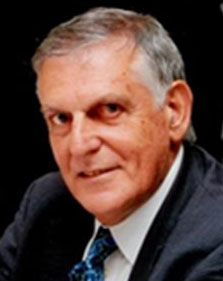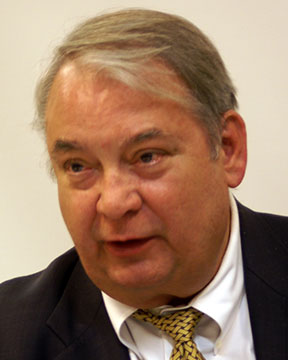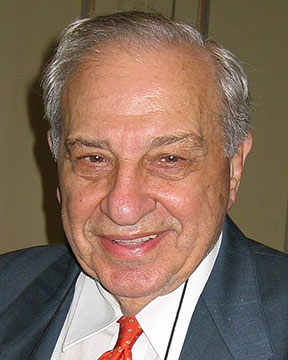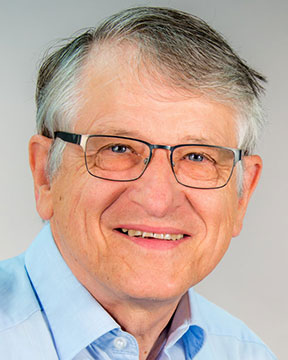ORALS
SESSION:
SISAMThuPM2-R3
C: Processing | Kobe International Symposium on Science of Innovative and Sustainable Alloys and Magnets (5th Intl. Symp. on Science of Intelligent and Sustainable Advanced Materials (SISAM)) |
| Thu Oct, 24 2019 / Room: Dr. Christian Bernard | |
| Session Chairs: Carlo Burkhardt; Session Monitor: TBA |
17:10: [SISAMThuPM212]
Effective Eectrochemical and Physical Reprocessing of Nd-Fe-B and Sm-Co Permanent Magnets, Approaching the Zero Waste Economy Kristina
Zuzek Rozman1 ; Xuan
Xu
1 ; Awais
Ikram
1 ; Farhan
Mehmood
1 ; Richard
Sheridan
2 ;
Allan
Walton2 ; Muhammad
Awais
2 ; Anas
Eldosoukey
3 ;
Spomenka
Kobe4 ;
Saso
Sturm5 ;
1Jozef Stefan Institute, Ljubljana, Slovenia;
2University of Birmingham, Birmingham, United Kingdom;
3Magneti LJubljana, d.d., Ljubljana, Slovenia;
4Josef Stefan Institute, Ljubljana, Slovenia;
5Head of Department for Nanostructured Materials, Ljubljana, Slovenia;
Paper Id: 189
[Abstract] Currently, less than 1% of the rare-earth elements (REEs) that reach the end of their useful lives are recycled. This is a very small percentage, especially if we consider that the recycling of end-of-life (EoL) (Dy, Nd)-Fe-B magnets is an important strategy for reducing the environmental dangers associated with rare-earth mining, and overcoming the well-documented supply risks associated with the REEs. We report on possibilities of direct electrochemical recycling and electrochemical reprocessing of Nd-Fe(B)-based magnets. Previous attempts to deposit alloys of rare earths from solutions at mild temperatures have met little success. Excitingly, in this investigation, we were able to electrodeposit Nd-Fe from the 1-ethyl-3-methylimidizolium dicyanamide ([EMIM][DCA]) ionic liquid. We observed that Nd(III) cannot be reduced independently, although it can be co-deposited inductively as substrate with the addition of Fe(II), proven by electron-energy-loss spectroscopy. Further, we propose a new concept of recycling the sintered (Dy, Nd)-Fe-B magnets by directly recovering the (Dy, Nd)<sub>2</sub>Fe<sub>14</sub>B matrix phase. Via an electrochemical etching method, we are able to recover pure individual(Dy, Nd)<sub>2</sub>Fe<sub>14</sub>B grains that can be re-used for new types of magnet production. In terms of energy consumption, the proposed electrochemical recycling route is comparable to the established direct re-use methods. These direct methods are considered as the most economical and ecological ways for recycling the sintered (Dy, Nd)-Fe-B magnets. In the frame of physical reprocessing, we have successfully synthesised new magnets out of hydrogen-recycled stocks with contemporary sintering technique of pulsed electric current sintering. The SmCo<sub>5</sub> magnets for recycling were first decrepitated by hydrogen gas to produce the powder. The sample sintered at 900°C showed the best internal coercivity (jHc) of higher than 1500 kA/m with high remanence (Br) value of 0.47 T. The optimal SPS conditions yielded fully dense Nd-Fe-B magnets with the coercivity Hc = 1060 kA/m, which was boosted to 1160 kA/m after the post-SPS thermal treatment. The Br and Hc were tackled further, and increased applied pressures of 100-150 MPa resulted in Br = 1.01 T. Via the addition of DyF<sub>3</sub>, 17.5% higher coercivity than the optimally SPS-ed magnet was obtained due to Dy substituting the Nd in the matrix Nd<sub>2</sub>Fe<sub>14</sub>B phase. We showed that with a fine tune of the SPS and post annealing, together with variations in Br and Hc, it is possible to revitalize the recycled Nd-Fe-B and Sm-Co magnets.
17:35 Break
SESSION:
SISAMFriAM-R3
D: Sustainable resources | Kobe International Symposium on Science of Innovative and Sustainable Alloys and Magnets (5th Intl. Symp. on Science of Intelligent and Sustainable Advanced Materials (SISAM)) |
| Fri Oct, 25 2019 / Room: Dr. Christian Bernard | |
| Session Chairs: George Hadjipanayis; Session Monitor: TBA |
12:10: [SISAMFriAM03] Keynote
Sustainable and efficient use of rare earth magnets Allan
Walton1 ;
1University of Birmingham, Birmingham, United Kingdom;
Paper Id: 410
[Abstract] In recent years there has been significant price volatility for rare earth magnets based upon neodymium iron boron (NdFeB), which has stemmed from possible supply constraints from the main supplier (China). The Magnetic Materials Group (MMG) has been developing recycling strategies for these materials to mitigate at least some of the supply risk as well as investigating efficient methods of manufacture for fully dense NdFeB magnets. In this presentation Prof Walton will outline the problems encountered when recycling rare earth magnets from end of life products, including identification of magnet type, ease of extraction, problems for purification and complications for re-processing into new materials. He will then propose solutions to these problems including new sensor technologies for identifying magnets in waste, robotic disassembly of magnet containing products and hydrogen based technologies for extraction and reprocessing of sintered magnets.
In the second part of the presentation Prof Walton will outline a new method for producing fully dense NdFeB magnets called the Hydrogen Ductilisation Process (HyDP ref- 1,2,3). During HyDP solid cast NdFeB alloys can be converted into a ductile material at room temperature. This is achieved by converting the cast alloy into a disproportionated structure containing -Fe, NdH2 and Fe2B by processing in hydrogen at between 1-2 bar pressure and > 600<sup>o</sup>C. The disproportionated material can be pressed at room temperature and on recombination this produces a small grained anisotropic NdFeB magnetic material. The HyDP process could be used to reduce the yield loss for producing thin magnets compared to conventional sintering processes, it may be possible to process in air which would reduce cost and it could be used to make complex geometries.
References:
1) GB Patent Application -
GB1511553.8. 2015
2) O.Brooks, A.Walton, W. Zhou and I.R.Harris, The Hydrogen Ductilisation Process (HyDP) for shaping NdFeB magnets, Journal of Alloys and Compounds 703 (2017) 538-547
3) O. Brooks, A. Walton, W. Zhou, D. Brown, I.R. Harris, Complete ductility
in NdFeB-type alloys using the Hydrogen Ductilisation Process (HyDP), Acta Materialia (2018), doi:10.1016/j.actamat.2018.04.055.



















